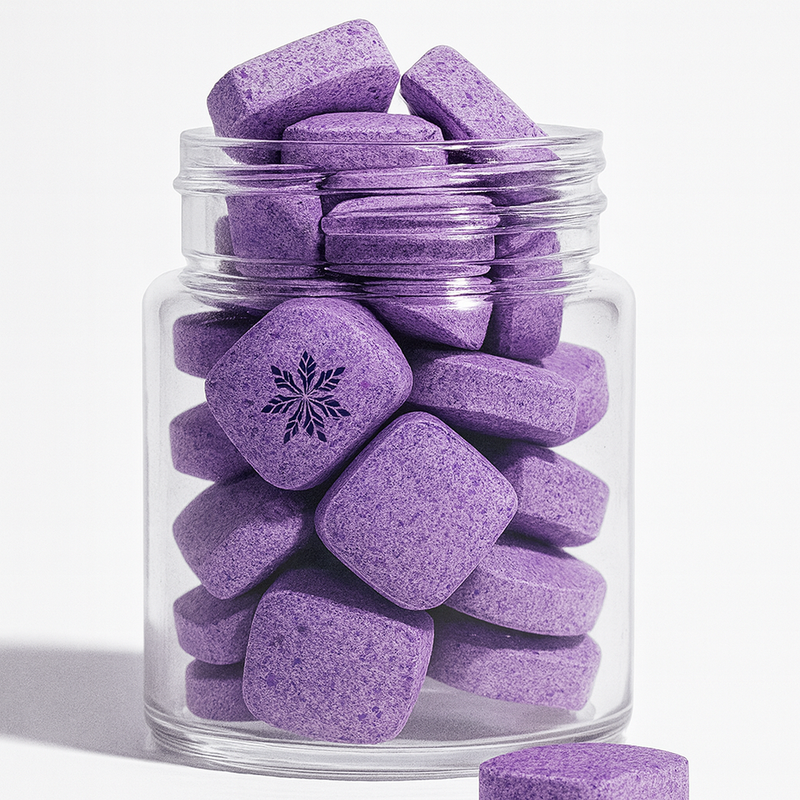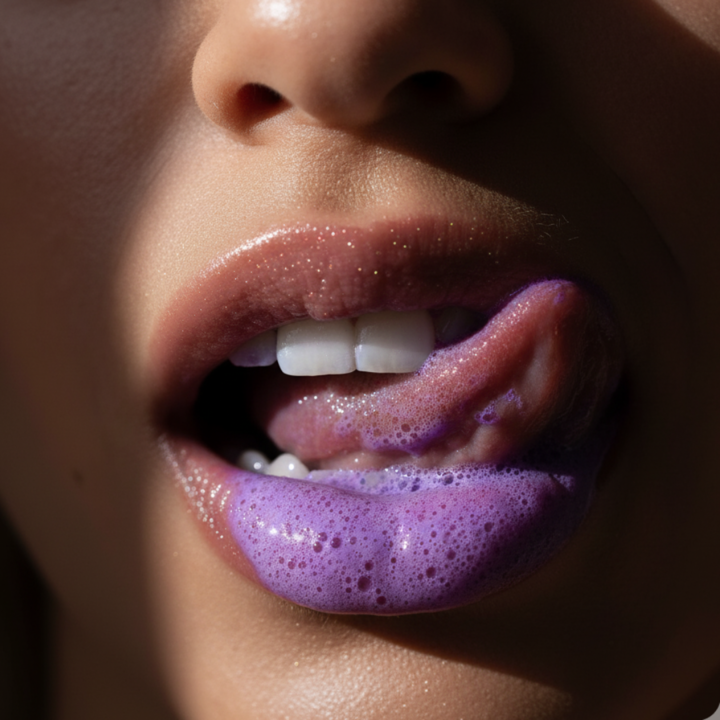It’s funny the things we remember.
I have a ton of cousins. As a little girl, I remember noticing the teeth of one particular cousin. (For a four year old to notice, you know, it seemed pretty puzzling to me.)
I remember looking at pictures of him to see if he had always had grey teeth. Sure enough, in his little toddler picture, there he was with a toothy grey smile. As a kid, I just thought he was born with grey teeth for no reason.
When I was in college, sitting with a group of fellow students just hanging out, I spotted her. Let me rephrase; I spotted her smile.
Her smile looked just like my cousin’s. Her permanent teeth were all grey from the root. Every single tooth in her mouth was grey.
Don’t ask me how I made it all the way to being a third-year college student with zero factual explanation for grey teeth, but I did. I had no idea why her teeth were discolored.
So what did I do? Naturally, I whispered to one of her friends and asked the question swimming around in my brain. “Why are her teeth grey?”
“Oh. That is from medication that her mom took during pregnancy,” she replied.
What. On. Earth?!!
This girl had discolored teeth her entire life because her mom took a medication prescribed to her during pregnancy. Dadgum tetracycline. That is what did it. The mother had no idea her baby would have discolored teeth forever.

Prior to the glorious 1980s, tetracycline was a commonly prescribed antibiotic. Everybody took it—including pregnant women and children. For Pete’s sake, it was just an antibiotic.
My cousin had taken tetracycline as a toddler. And it affected his teeth forever.
Tetracycline was used to treat various afflictions, from acne to bladder infections. Mothers would discover that their babies were affected if they took it between four months in utero to about five months postpartum if they were breastfeeding.
What do tetracycline stains look like?
I suppose you could say that tetracycline stains appear to be aggressive. They are not something that will go unnoticed. The stains themselves can range from shades of brown to grey.
Children under eight years old who take tetracycline are at the highest risk for discoloration. The calcium present in those kiddos’ teeth can bond with the tetracycline and cause a permanent change to the color of the teeth and affect future permanent teeth.
Guess what else? Those darn stains are intrinsic. Yep. This means that the inside of the tooth is dark and shows through to the surface.
Can tetracycline stains be removed?
Research tells us that there are different schools of thought as to whether or not the stains resulting from tetracycline can be removed. Now that we’ve put that out there, we’re going to tell you the possible ways to improve the appearance of stained teeth.
All of that to say that some research tells you that the stains can be improved, while some of it says that it is impossible to remove tetracycline stains.
Bleaching Tetracycline-Stained Teeth
Bleaching is one of the most common options for whitening teeth. To really comprehend what it means, you need to know how bleaching works for normal teeth.
It’s common for dentists to help their patients choose the most economical method for removing stains. This means using trays that are worn at night. Yep. Bleaching by moonlight.
Wow. That almost sounds romantic. Sorry to burst your bubble. It isn’t.

A little good old 10% carbamide peroxide bleaching agent will be your date for tray night. It is approved by the American Dental Association and has been researched more than every other bleaching material.
Bleaching teeth stained by tetracycline exposure is not like bleaching teeth stained by coffee, tea, or cigarettes. The amount of time it takes for teeth to improve in color is substantially longer because of the intrinsic tetracycline stains.
The agents used for bleaching and the technique must be both spots on. You will be using the bleach for as long as twelve to eighteen months.
You may be wondering why we are not calling it “whitening” your teeth. Whitening teeth is all about surface stains. There is nothing “surface'' about tetracycline stains. Those stains are deep.
Bleaching goes beyond the surface to change the color of your teeth. That is why regular whitening toothpaste will absolutely not work on tetracycline stains.
Something that many of us don’t know about teeth is that they respond to treatment, kind of like our skin reacts to the sun. It’s different. There is no one-size-fits-all bleaching treatment that ends with the same results.
Some people’s teeth get whiter than others’. Some people’s teeth take longer than others. Average teeth take an average of about two weeks to whiten through bleaching with trays.
Teeth damaged by tetracycline will take an average of three to four months before showing improvement. In some cases, it can take over one year. And, truth be told, those teeth may never be truly white. The results will vary from person to person.
As I mentioned, the color of the stains can range from brown to gray. Believe it or not, brown and yellowish stains are easier to improve upon. The teeth with a grey hue are tougher. The response of grey teeth to a bleaching material is much harder to predict.
If you have average teeth, bleaching won’t seem to be doing much for a few days. But it gets better. After a few days are up, average teeth begin to show results visibly. The teeth will keep improving in color until they hit their top level of whiteness.
This level of color has to do with the individual person and not necessarily the amount of bleach. One more reason why the end results vary between individuals.
Teeth basically plateau. They hit a certain shade of white, and that’s it. They are done.
When tetracycline is the cause of stained teeth, the results are much different. Bleaching will show results pretty quickly. And then it seems like nothing is happening for about a month.
You will need to stick with the bleaching trays for close to two months before noticing the effects. And just like average teeth, the tetracycline-stained teeth hit a plateau of whiteness.
Before you bleach …
Make sure you have your dentist perform a thorough examination of your teeth before using any bleach on them. Your dentist should pay close attention to the color of your teeth at the gumline.
The area of your tooth closest to the gum line is much harder to bleach. The dentin is thicker here. That means the annoying tetracycline that has bonded with your calcium is much more concentrated here.
The gum line is also the place where roots may be exposed. If there are roots exposed, those areas will not respond to bleach.
What about bleaching sensitivity?
Yep. Your teeth can become pretty sensitive when going through the bleaching process. Most dentists will provide a solution for this sensitivity issue in the form of potassium nitrate.
Potassium nitrate paste can be used in your trays and worn for about thirty minutes. People typically experience much less sensitivity after doing this.
For those people who had sensitive teeth before bleaching, a little prep work will be helpful. Two weeks prior to bleaching, brushing the teeth every day with a 5% potassium nitrate toothpaste will be pretty helpful in sensitivity reduction.
Bonding
Another option for dealing with tetracycline stains is to have your dentist perform composite bonding. Composite bonding is like putty for your teeth.
In the same way, you would grab some drywall putty to fill in imperfections, dings, and nail holes in your wall; composite bonding is basically rubbed into the teeth to cover up those stains.
If you go with bonding, make sure your dentist has quite a bit of experience using it. For your teeth to look really natural, your dental professional needs to be like an artist. They are essentially like the Michelangelo of your smile.
The composite material comes in many shades. Your dentist should meticulously choose a color that matches your existing tooth so that it seamlessly blends in with your smile.
Composite bonding should enhance your smile, not add distracting, mismatched white spots. That would pretty much defeat the purpose of improving your smile.
Bonding can be done in conjunction with bleaching … but definitely not right after bleaching.
Bleach causes the teeth to release oxygen. That release of oxygen will negatively impact any bonding done shortly after bleaching. Make sure you do not attempt composite bonding for a minimum of two weeks after you’ve completed your bleaching treatment.
If you wait two weeks, the oxygen shouldn’t be a problem anymore. Plus, that oxygen release has an effect on the color of your newly whitened teeth. You will want your tooth color to be settled before the composite material is matched to your teeth.
Don’t try to be sneaky and continue using any type of over-the-counter whitening toothpaste during your two-week waiting period. This can affect the shade of your teeth and how they respond to the composite bonding.
Veneers
One school of thought suggests to us that veneers are the only option to help improve the look of teeth stained brown or gray by tetracycline. Veneers can certainly change the look of any smile.
Porcelain veneers completely cover the front surface of teeth. Some people go pretty extreme with their veneers’ look and mimic a celebrity smile rather than covering their existing with a smile.
They act as a shell that is affixed to the front of your smile. Veneers are designed to look just like real teeth … only better.
When you take care of veneers, they have been known to last at least ten years and are replaceable if you should have any issues.
Many people believe that this is your only option if you suffer from tetracycline stains in your teeth. While it is a great option, it is also a costly option. Veneers can cost anywhere from $400 to $2500 … per tooth. Yep. You read that right.
Which is better, bleaching or veneers?
Well, the answer to this question depends on the level of staining. If the stains from tetracycline are all along the gumline, bleaching may not be the best option. Veneers may be a better choice.
But. And there is a but. If you don’t try bleaching first, you will never know if it could actually work for your stains. The safest approach is to bleach the teeth first.
If bleach doesn’t work, then you will know for certain that veneers are a better option for you. I know I would rather try a much less expensive option before spending thousands of dollars!
Crowns
Crowns are an option for masking those tetracycline-stained teeth. Yep. We’d be lying to you if we didn’t tell you it is a possibility.
Mmm hmm.
To have a crown put on your tooth, the dental professional will remove your tooth’s outer layer. Your tooth will be sanded or ground down so that a crown can fit over the top of it. You lose part of your tooth.
Crowns are not our favorite option. We will not suggest that you go with the option that forces you to lose part of your natural tooth.
In the end …
Tetracycline may do its job as an antibiotic and kill whatever infection is ailing you. That much may be true.
But for the love of healthy, white teeth, do not take it while you are pregnant or breastfeeding, and do not let your kiddos under the age of nine take it!
If you are one of the people who has had the misfortune of being affected by tetracycline, speak to your dentist about a bleaching treatment program. And be sure to pay attention to the sensitivity issues.
The reality of our world is that our eyes are naturally drawn to smiles.
As a four year old girl, I noticed the differences. Many people do. Our eyes naturally find a speck of broccoli or black pepper sitting among a row of pearly whites.
We can’t help it. Our eyes have been drawn to smiles since we were babies. We have been conditioned to notice a person’s smile since birth.
So just imagine how much more we notice our own smiles. Every noticeable imperfection stands out to us. We know which teeth are out of place. We know which teeth have stains.
Stains will not go away on their own; they take consistent work to remove. Surface stains can often be handled at home with DIY whitening treatments. (Our favorite is Snow! You won’t find a more effective system for whitening your teeth at home.)
Tetracycline stains occur within the tooth and cannot be handled by regular methods done at home. If you want to say goodbye to grey, you will want to take the information you’ve learned here and ask your dentist for a treatment plan.
In most cases, a perfect smile takes at least a few visits to the dentist. Coffee stains, misalignment, and tooth decay are all fairly easy fixes for a dentist and won’t cost too much money, time, or stress.
There are, however, a handful of dental dilemmas that are a little more difficult to solve. We’ve never had to turn down a patient because we couldn’t transform their smile, but every case is different, which means some are going to take a larger investment than others. One of those larger investment cases is tetracycline staining.






































































